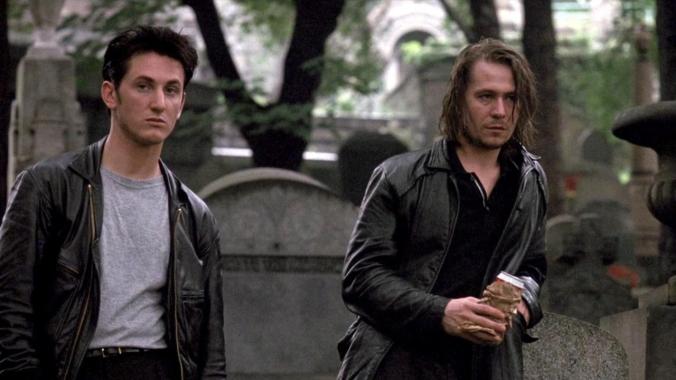Before the geek underground went mainstream—before the Internet exposed its numbers as legion; before corporations fully understood that superheroes were woefully underexploited billion-dollar assets—there was no better place to both talk and learn about pop culture than the neighborhood comic shop.
When it opened in 1991, Magnum Comics & Cards wasn’t the first direct-market specialty store in the northwest sector of the Bronx where I grew up, but it was inarguably the liveliest, the one with the most personality. That was owed, in no small part, to its colorful proprietor, Neil Shatzoff.
Holding court from behind the register, Neil would speak with juvenile exuberance and encyclopedic authority on pop esoterica: why Brian Dennehy would’ve made for a better Commissioner Gordon than Pat Hingle (I agree, but, hey—at least we eventually got Gary Oldman); why Joel Schumacher’s track record for dark-skewing commercial cinema (The Lost Boys, Falling Down) made him a promising candidate to take over the Batman franchise from Tim Burton (well, it seemed like a good fit on paper…); why Kevin Smith’s unproduced Superman Lives script was budgetarily impractical and narratively quixotic (turns out, it was twenty years ahead of its time). His disquisitions were all the more entertaining for his impish, whip-fast wit; reflecting on the Academy’s arbitrary predilection to honor films over movies, he once noted: “Gandhi won an Oscar for Best Costume Design, and all they did was throw a couple of towels over him.”
COMIC ESCAPADES
All throughout high school, I’d pop by the shop every Wednesday to get my weekly fix of superhero soap opera—the now-classic Death of Superman and Batman: Knightfall storylines were unfolding at the time—and, more to the point, to listen to Neil wax pop-cultural. A decade my senior, he supplemented my cinematic education—the way an older sibling’s musical tastes might rub off on you—by introducing me to genre essentials that were just a little before my time: The Thing and An American Werewolf in London and Thief (the feature-film debut of Michael Mann and spiritual precursor to Heat) and the Dirty Harry series. (Though I can’t say for certain, it’s possible the first Dirty Harry sequel, Magnum Force, influenced the name of the shop itself).
It was by way of the file cabinet–mounted TV behind the counter that I first became aware of things like aspect ratios and audio commentaries and director’s cuts; Neil was an early adopter of LaserDisc, and would dub them onto VHS and play them in the store. Imagine my surprise to learn there was a “secret” longer version of Aliens (by seventeen minutes!), or a definitive two-hour documentary on the making of Jaws. In the days before such things were standard-issue features on DVDs, there was only one guy I knew who had access to all that amazing arcana, and he delighted in sharing his zeal for it with his customers.









Recent Comments